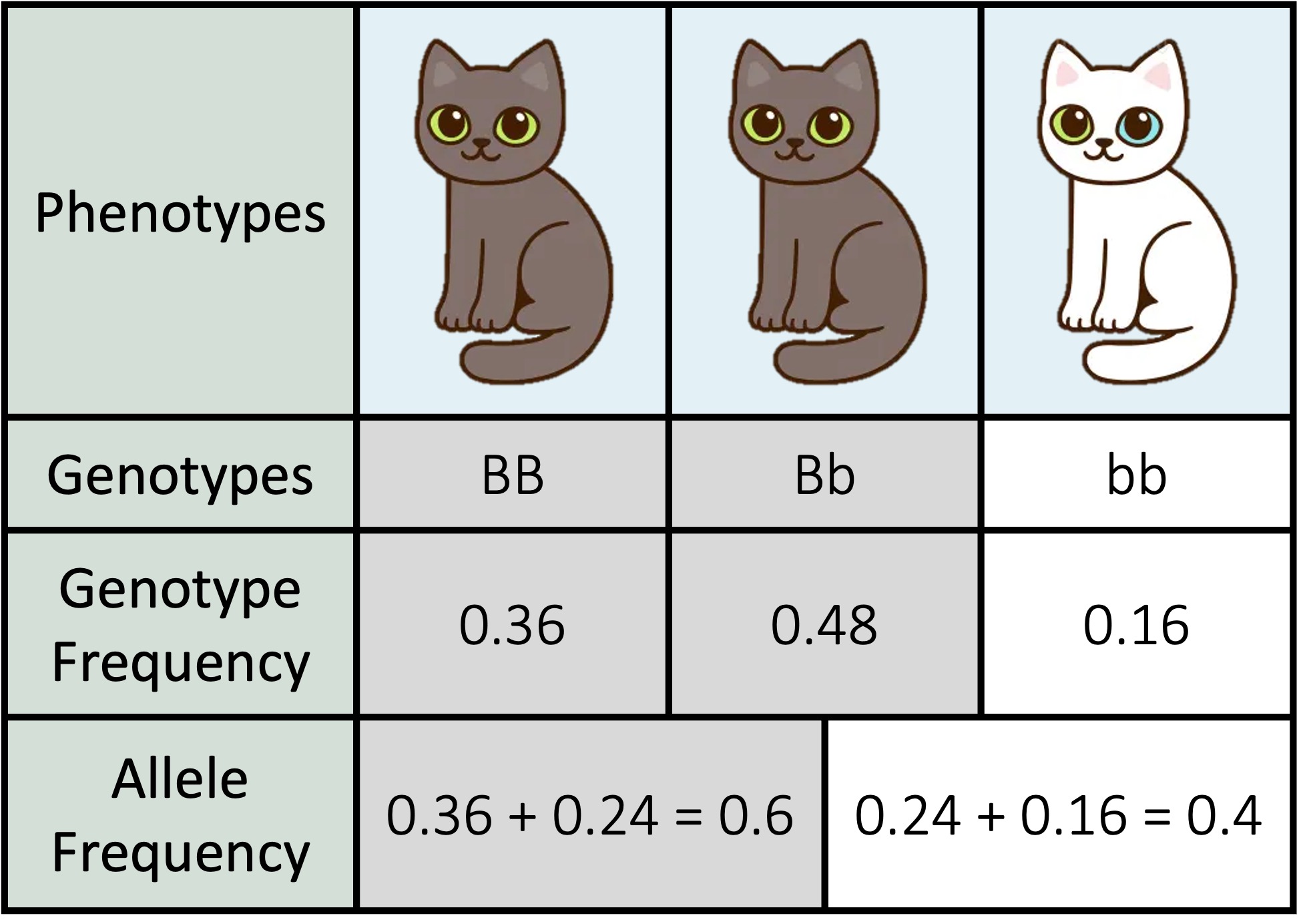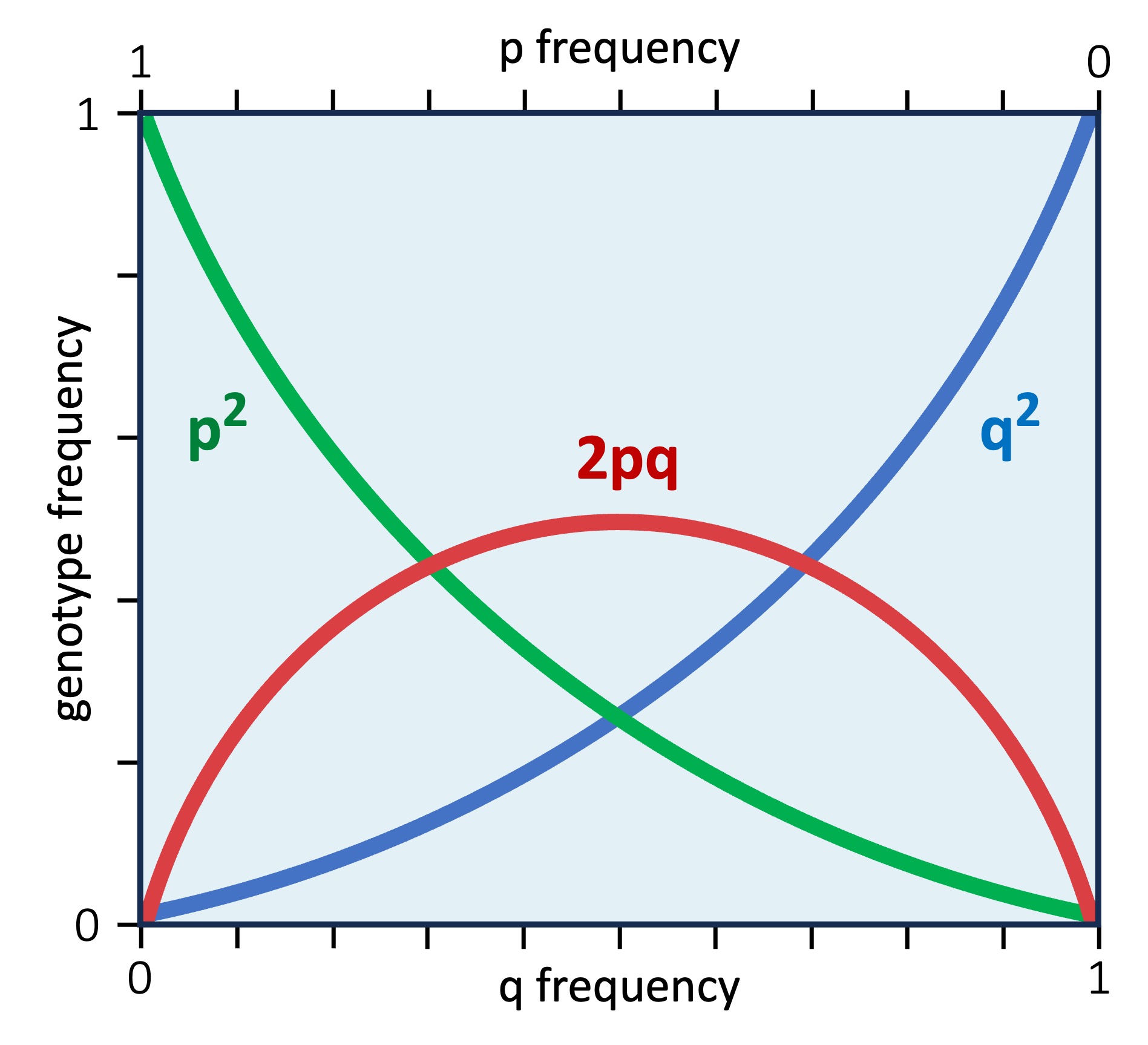

Hardy-Weinberg Equation
The Hardy-Weinberg equations function to allow for the determination of allele or genotype frequency within a population
-
If a phenotype is determined by a single gene with two alleles, three genotypes are possible – AA, Aa or aa
Equation 1: p + q = 1
-
The letter p represents the frequency of the dominant allele (A), while q represents the frequency of the recessive allele (a)
-
The total frequency of both alleles must equal 100% (or in other words: p + q = 1)
Equation 2: p2 + 2pq + q2 = 1
-
Because a genotype consists of two alleles, the first equation must be squared to determine genotype frequencies
-
This gives an expanded equation, whereby p2 = AA ; 2pq = Aa ; q2 = aa
Applying Hardy-Weinberg:
Within a population, the frequency of the homozygous recessive phenotype (aa) is usually the only directly observable characteristic
-
It is impossible to tell from direct observation if the dominant phenotype is homozygous (AA) or heterozygous (Aa)
Calculating allele and genotype frequencies using the Hardy-Weinberg equations involves the following steps:
-
Identify the frequency of the recessive phenotype (q2)
-
Take the square root of q2 to find q (frequency of recessive allele)
-
Subtract q from 1 to determine p (frequency of dominant allele)
-
Square p to determine p2 (frequency of homozygous dominant genotype)
-
Use p and q to determine 2pq (frequency of heterozygous genotype)
-
Check the calculations are correct (p2 + 2pq + q2 = 1)
Worked Example:
In a population of 250 cats, 40 cats have white fur (white fur is recessive to black fur)
-
How many of the cats with black fur are heterozygous for this characteristic?
Using the Hardy-Weinberg equations:
-
q2 = 0.16 (40 ÷ 250)
-
q = 0.4 (√ 0.16)
-
p = 0.6 (1 – 0.4)
-
p2 = 0.36 (0.6 × 0.6)
-
2pq = 0.48 (2 × 0.4 × 0.6)
-
Check: 0.16 + 0.48 + 0.36 = 1
Answer: 120 cats (48% of 250)

Hardy-Weinberg Conditions:
The Hardy-Weinberg model assume certain conditions must be maintained for a population to be in genetic equilibrium
-
The population is large with random mating
-
There is no mutation or gene flow
-
There is no natural selection or allele-specific mortality
If any of these conditions are not met, then the population will not maintain a genetic equilibrium and it can be concluded that the population is evolving
The Hardy-Weinberg Principle






